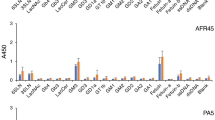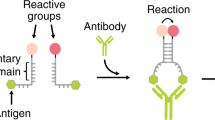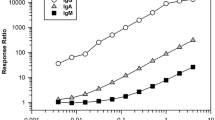Abstract
High selectivity provided by biomolecules such as antibodies and enzymes has been exploited during the last two decades for development of biosensors. Of particular importance are efficient immobilization methods for biomolecules in order to preserve their biological activities. In this study, we have evaluated immobilization strategies for an anti-DNA antibody on a self-assembled monolayer of ω-functionalized thiols. The antibody was immobilized via peptide bond formation between the primary amines in the antibody and the carboxyl groups on the self-assembled monolayer. The peptide bond coupling was achieved by activating COOH groups on the surface through N-Hydroxysuccimide (NHS)-ester formation, followed by acylation of NH2 group in the antibody. DNA binding activity of the immobilized antibody was examined by counting β emission from 35S-labeled DNA.
Similar content being viewed by others
Article PDF
Author information
Authors and Affiliations
Rights and permissions
This is an Open Access article distributed under the terms of the Creative Commons Attribution Non-Commercial License (http://creativecommons.org/licenses/by-nc/3.0/) which permits unrestricted non-commercial use, distribution, and reproduction in any medium, provided the original work is properly cited.
About this article
Cite this article
Yoo, SK., Yoon, M., Park, U. et al. A radioimmunoassay method for detection of DNA based on chemical immobilization of anti-DNA antibody. Exp Mol Med 31, 122–125 (1999). https://doi.org/10.1038/emm.1999.20
Published:
Issue date:
DOI: https://doi.org/10.1038/emm.1999.20
Keywords
This article is cited by
-
Molecular-electromechanical system for unamplified detection of trace analytes in biofluids
Nature Protocols (2023)



